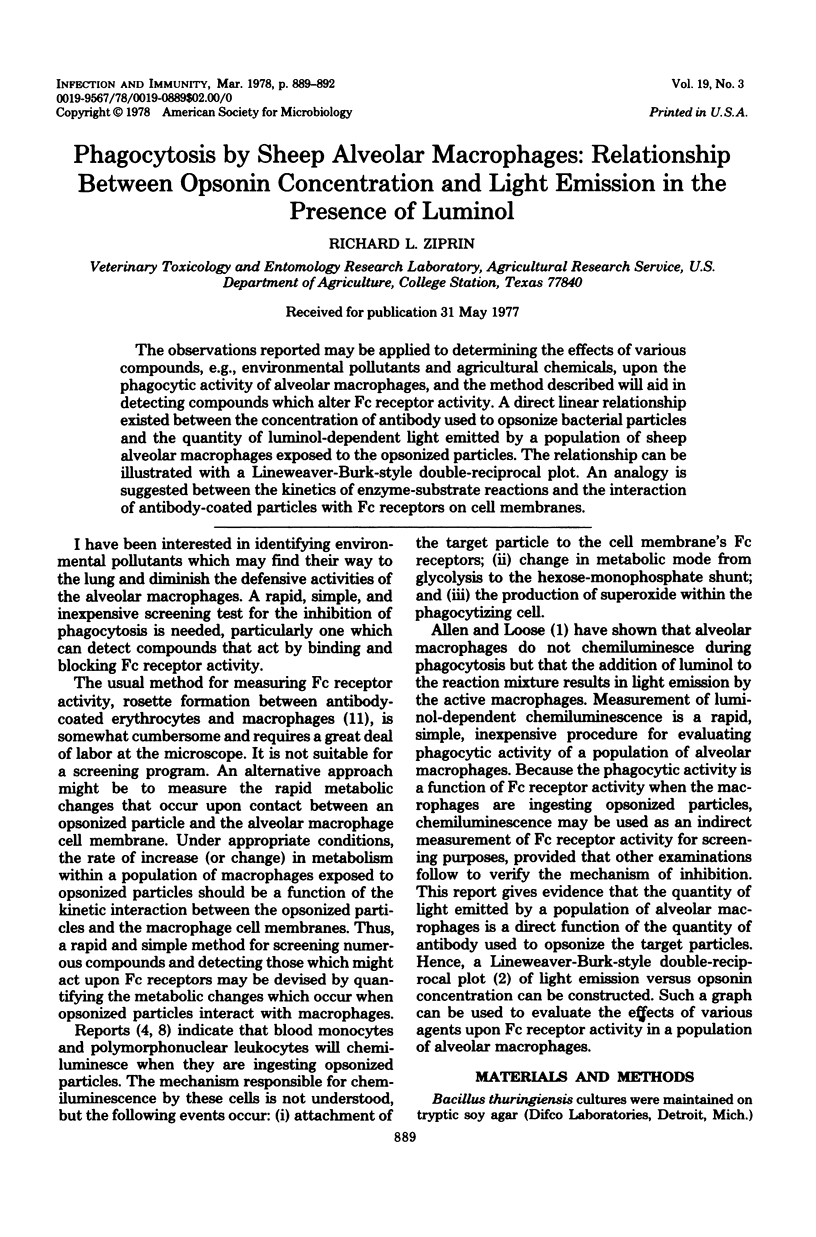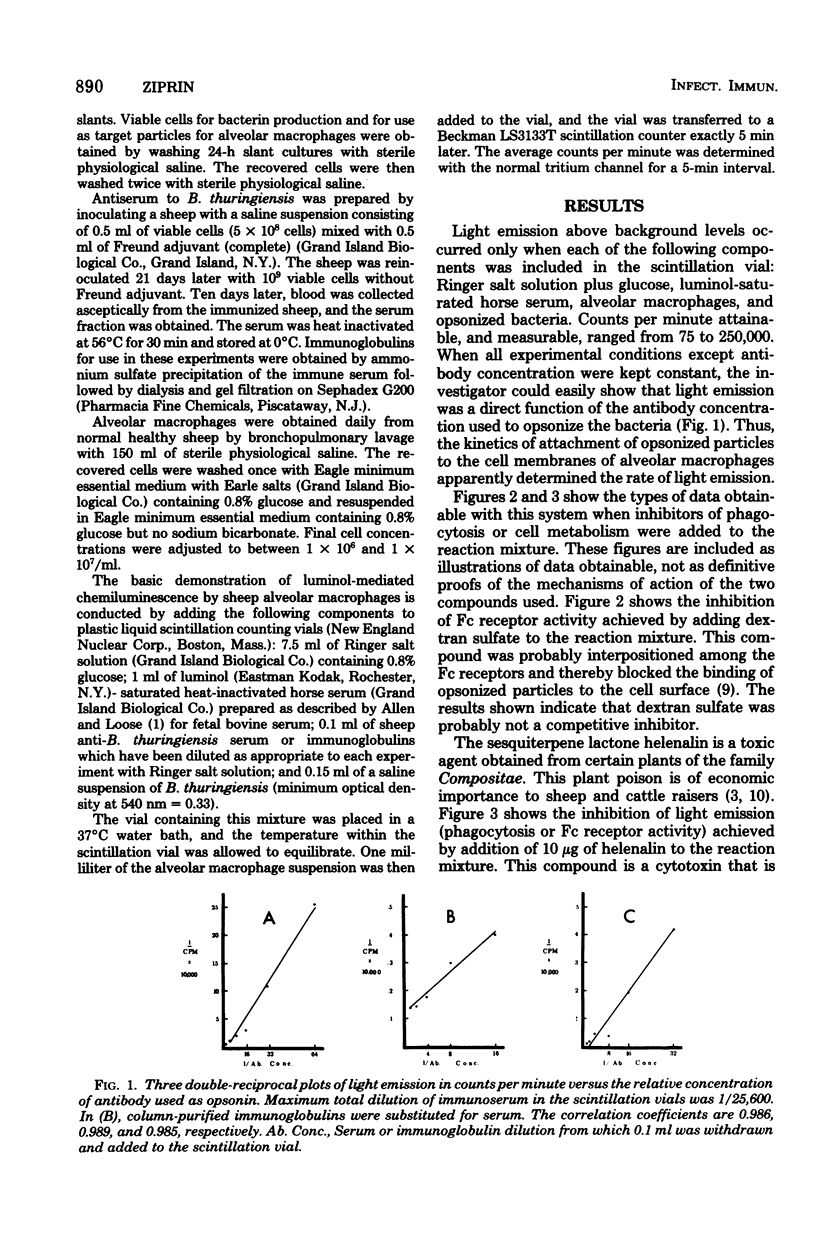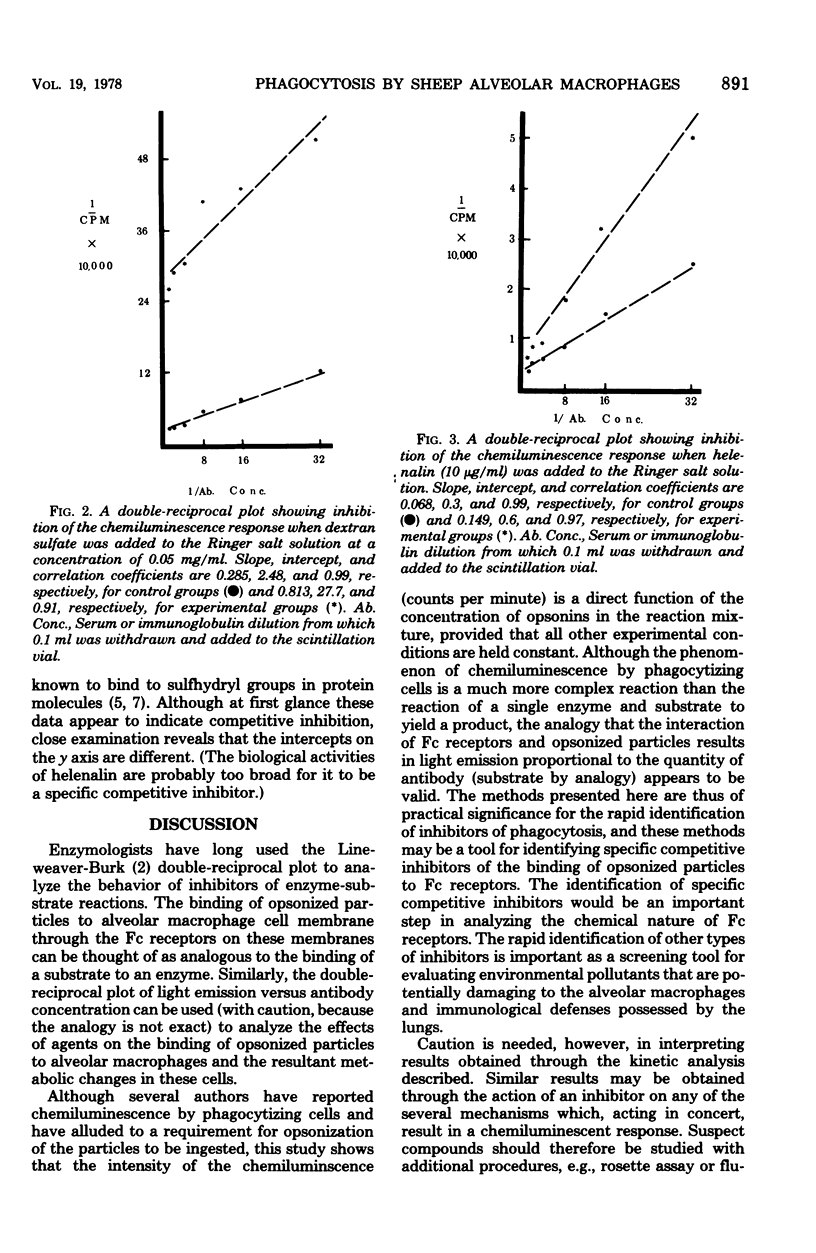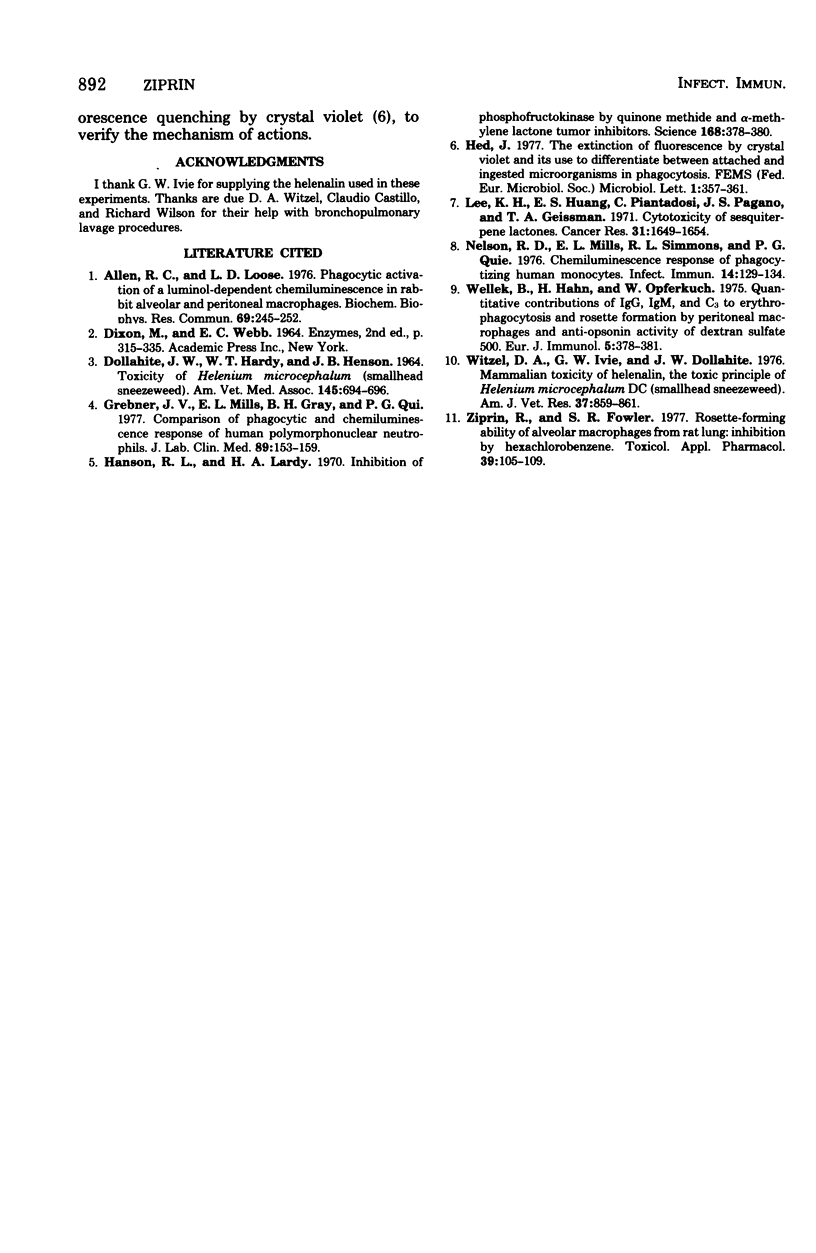Abstract
The observations reported may be applied to determining the effects of various compounds, e.g., environmental pollutants and agricultural chemicals, upon the phagocytic activity of alveolar macrophages, and the method described will aid in detecting compounds which alter Fc receptor activity. A direct linear relationship existed between the concentration of antibody used to opsonize bacterial particles and the quantity of luminol-dependent light emitted by a population of sheep alveolar macrophages exposed to the opsonized particles. The relationship can be illustrated with a Lineweaver-Burk-style double-reciprocal plot. An analogy is suggested between the kinetics of enzyme substrate reactions and the interaction of antibody-coated particles with Fc receptors on cell membranes.
Full text
PDF



Selected References
These references are in PubMed. This may not be the complete list of references from this article.
- Allen R. C., Loose L. D. Phagocytic activation of a luminol-dependent chemiluminescence in rabbit alveolar and peritoneal macrophages. Biochem Biophys Res Commun. 1976 Mar 8;69(1):245–252. doi: 10.1016/s0006-291x(76)80299-9. [DOI] [PubMed] [Google Scholar]
- Dollahite J. W., Hardy W. T., Henson J. B. Toxicity of Helenium microcephalum (smallhead sneezeweed). J Am Vet Med Assoc. 1964 Oct 1;145(7):694–696. [PubMed] [Google Scholar]
- Grebner J. V., Mills E. L., Gray G. H., Quie P. G. Comparison of phagocytic and chemiluminescence response of human polymorphonuclear neutrophils. J Lab Clin Med. 1977 Jan;89(1):153–159. [PubMed] [Google Scholar]
- Hanson R. L., Lardy H. A., Kupchan S. M. Inhibition of phosphofructokinase by quinone methide and alpha-methylene lactone tumor inhibitors. Science. 1970 Apr 17;168(3929):378–380. doi: 10.1126/science.168.3929.378. [DOI] [PubMed] [Google Scholar]
- Lee K. H., Huang E. S., Piantadosi C., Pagano J. S., Geissman T. A. Cytotoxicity of sesquiterpene lactones. Cancer Res. 1971 Nov;31(11):1649–1654. [PubMed] [Google Scholar]
- Nelson R. D., Mills E. L., Simmons R. L., Quie P. G. Chemiluminescence response of phagocytizing human monocytes. Infect Immun. 1976 Jul;14(1):129–134. doi: 10.1128/iai.14.1.129-134.1976. [DOI] [PMC free article] [PubMed] [Google Scholar]
- Wellek B., Hahn H., Opferkuch W. Quantitative contributions of IgG, IgM and C3 to erythrophagocytosis and rosette formation by peritoneal macrophages, and anti-opsonin activity of dextran sulfate 500. Eur J Immunol. 1976 Jun;5(6):378–382. doi: 10.1002/eji.1830050605. [DOI] [PubMed] [Google Scholar]
- Witzel D. A., Ivie W., Dollahite J. W. Mammalian toxicity of helenalin, the toxic principle of Helenium microcephalum CD (smallhead sneezeweed). Am J Vet Res. 1976 Jul;37(7):859–861. [PubMed] [Google Scholar]
- Ziprin R. L., Fowler S. R. Rosette-forming ability of alveolar macrophages from rat lung: inhibition by hexachlorobenzene. Toxicol Appl Pharmacol. 1977 Jan;39(1):105–109. doi: 10.1016/0041-008x(77)90182-x. [DOI] [PubMed] [Google Scholar]


